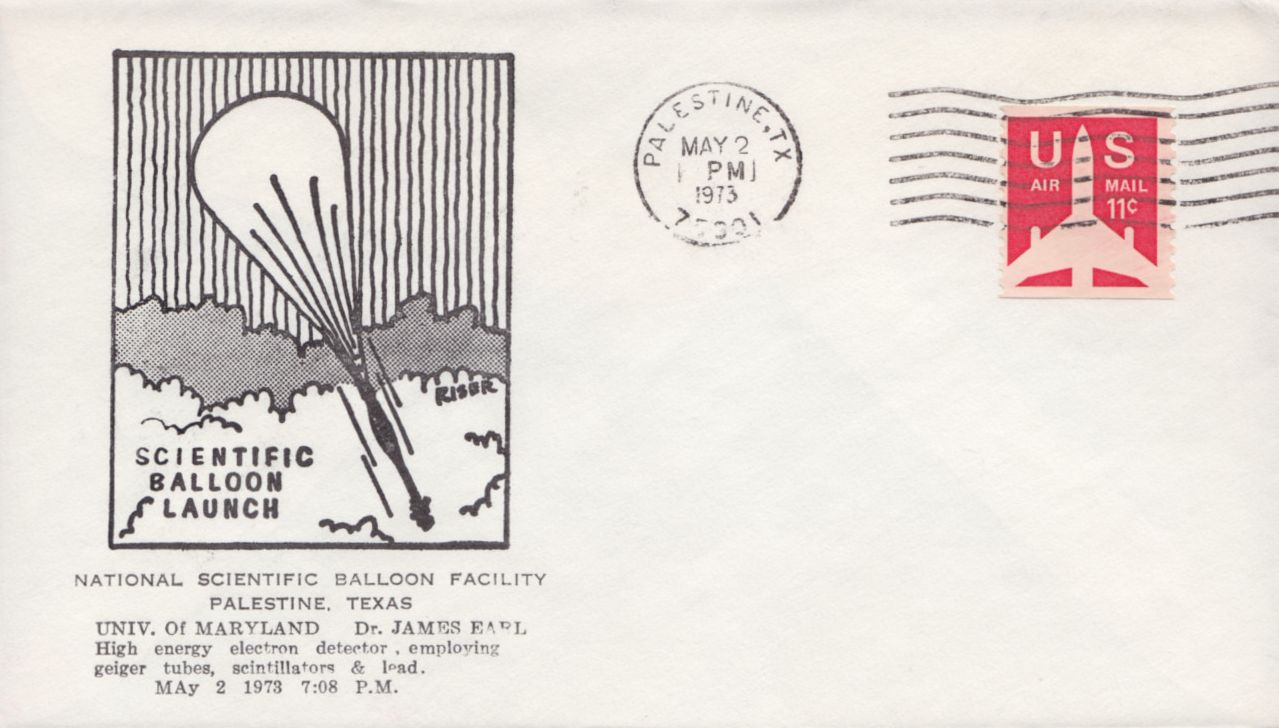Purpose of the flight and payload description
Objective of the flight was to measure the flux of primary cosmic ray electrons from 5 GeV to 100 GeV using a geiger tube hodoscope developed at the University of Maryland. The instrument was flown from Texas in order to improve on the statistics from two previous flights, to check the accuracy of the measurements above 50 GeV by slightly modifying the triggering requirements, and to flight test new home-built geiger tubes.
Details of the balloon flight
Balloon launched on: 5/2/1973
Launch site: Columbia Scientific Balloon Facility, Palestine, Texas, US
Balloon launched by: National Scientific Balloon Facility (NSBF)
Balloon manufacturer/size/composition: Zero Pressure Balloon Winzen - 300.160 m3 (17.78 microns - Cap. 17.78 microns Stratofilm)
Flight identification number: 743P
End of flight (L for landing time, W for last contact, otherwise termination time): 5/2/1973
Balloon flight duration (F: time at float only, otherwise total flight time in d:days / h:hours or m:minutes - ): F 11 h 25 m
Payload weight: 885 kgs
Due to an instrument failure, data was obtained only during the ascent.
Postal cover issued on launch day commemorating the flight

External references
- National Scientific Balloon Facility Annual Report FY 1973 National Center for Atmospheric Research, September 1973
5104If you consider this website interesting or useful, you can help me to keep it up and running with a small donation to cover the operational costs. Just the equivalent of the price of a cup of coffee helps a lot.

